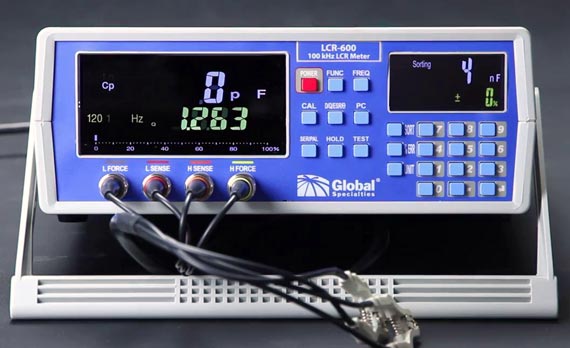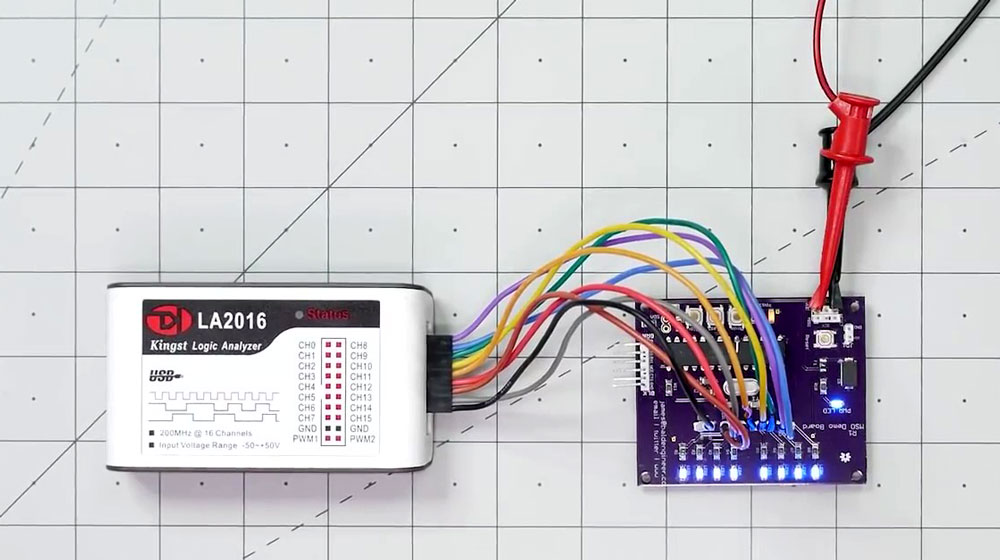
Electronic components are very important parts of electronic systems that must work efficiently. These components are individual industrial devices that impact the electron movement in electrical systems. Many passive and active components combine to form these devices.
To ensure that the internal components of these devices are perfect, several instruments are used. One such instrument is called the LCR meter that checks the passive parts of electronic components.
What is LCR meter?
The operation of any electronic component primarily depends upon three passive components, inductance, capacitance, and resistance. The instrument used to measure the values of these components is called the LCR meter. Essentially speaking, the LCR meter measures the impedance of any device.


Impedance means the complex resistance presented by any device under the presence of an active current and voltage. The meter calculates the values of voltage, current, and phase angle between voltage and current in a circuit. These values are then used to calculate the impedance.
The LCR meters are very important testing equipment. They ensure the proper functioning and suitability of the electric components for the final device. It is inevitable to have the right LCR meter for accurate measurements.
There are many varieties of LCR meters. Some of the common types include:
Handheld LCR meter:

These are the simpler versions. They are lightweight, battery-operated, and portable.
Tabletop or benchtop LCR meter:

These are the improved and more advanced versions. They have a wider frequency range, higher accuracy rates, computerized operation, and automation data collection.
The simpler LCR meters measure the impedance directly. This value is then used to derive the values for inductance, capacitance, etc. On the other hand, an advanced LCR meter calculates the true values of all components separately. This includes capacitance, inductance, and Q factor, equivalent resistance, etc.
Several other advanced features like list sweep, comparator, DC bias current, DC bias voltage, etc. also come nowadays.
How to use LCR meter?
It is important to know the right technique for operating an LCR meter. This is to ensure accurate value outputs and error avoidance.
Following are the steps you should follow for using the LCR meter:
- Start the meter 20 to 30 minutes prior. This warms up the meter for better operability and higher precision in outputs.
- Start with establishing the connection between the test device and meter. LCR meters are usually connected as per the 4 wire Kelvin method. There are four terminal connections with which the two devices are connected. This method proves helpful in error reduction due to the risk of voltage drop.
- Set a frequency value for the test to commence.
- Apply a fixed voltage to the circuit.
- Observe the part under test. Record the values of the real voltage, current flowing, and phase angle or the difference between current and voltage.
Here are some tips to remember for using the LCR meter:
- It’s good to choose a frequency value closer to the frequency of the final device for which the component will work. This minimizes error risk and frequency change impact.
- Keep the lead length shorter for accurate measurements.
- The test amplitude must also be equivalent to the final operational amplitude.
- Always remember to discharge the capacitors before new tests. The presence of any residual charge can affect the test results.
LCR meter vs. multimeter
The manufacturing of electrical systems incorporates multiple layers of checks. These checks are done on their electrical components to ensure they are fault-free. Out of the numerous testing instruments used for the purpose, the LCR meter and Multimeter are two important ones. Both are used for measurements, but they are operationally very different.
Here are some of the key differences between the two types of equipment:
- The LCR meter measures the capacitance, resistance, and inductance in the circuit under test. A multimeter measures the current, resistance, and voltage in the circuit under test. However, LCR meters remain more accurate since they are dedicated equipment.
- The circuits of the two devices are very different. While LCR meter uses RC ratio arm and Wheatstone bridge circuits, Multimeter uses DC amplifier balanced bridge.
- From the surface level, both testing devices are used for the same aim. Both of them test electrical components for proper functioning. However, the difference lies in their target test devices. LCR meters test the components and their LCR values. Multimeters test various things including components, electrical signals of power sources, fuses, etc. They ensure the full primary diagnosis of devices under test.

As you can see, a multimeter does the job of an LCR meter too. However, LCR meters remain more accurate since they are dedicated pieces of equipment. The multimeter has just more diverse operational capability.
The advanced LCR meters nowadays prove more useful than any other equipment. For precision testing, LCR meters are the better choice. In terms of overall effectiveness and importance, LCR meters win over Multimeters.
How to select LCR meter?
An efficient LCR meter is an inevitable requirement for manufacturing the best electrical devices. Choosing the right LCR meter depends on a lot of factors. Here are some important factors to consider:
Accuracy
You can choose between digital and analog LCR meters, depending upon your accuracy requirements. Digital LCR meters are more accurate. Also, check the manuals of the meter for accuracy formulas. The operation time of the device can also be considered where higher accuracy takes a longer time.
Frequency input
An LCR meter with support for variable frequencies is better. This is better for accurate results that match the needs of the final operational component.
Voltage input
LCR meters with programmable voltage capabilities are better.
Frequency of use
Depending upon the intensity of use and your measurement requirements, you can select an LCR meter. The simple ones can do occasional testing, while for regular testing, it’s better to get advanced ones.
Sturdiness
The built quality of LCR meters is no way a less important factor. Select the one with a durable and strong built.
Data storage
Some LCR meters also come with the option of data storage. Check for the same if you want to store readings for frequent reference purposes.
Conclusion
An LCR meter is a useful test instrument. Today, you can find LCR meters in several development laboratories for the performance testing of components. Additionally, they are used in workshops for finding fault in the components. Thus, LCR meters help in assessing the overall quality and performance of components.
Did you likeour What is LCR meter post? Please let us know and check our other posts – What is an Oscilloscope? could be interesting fo you!




